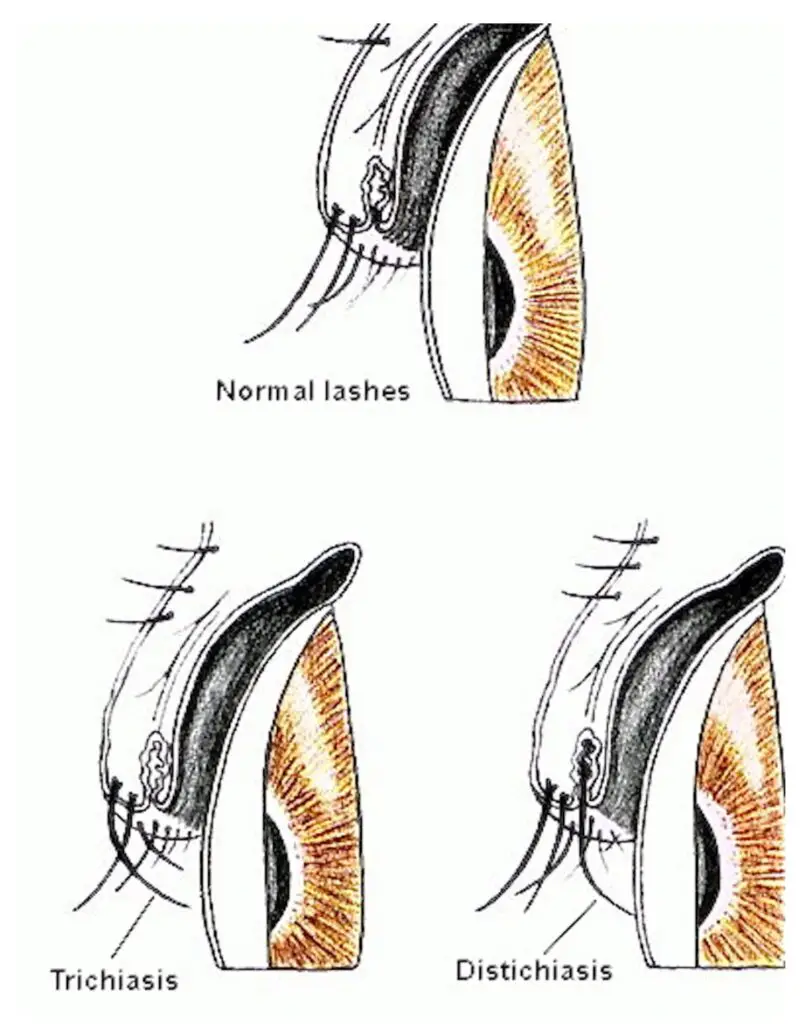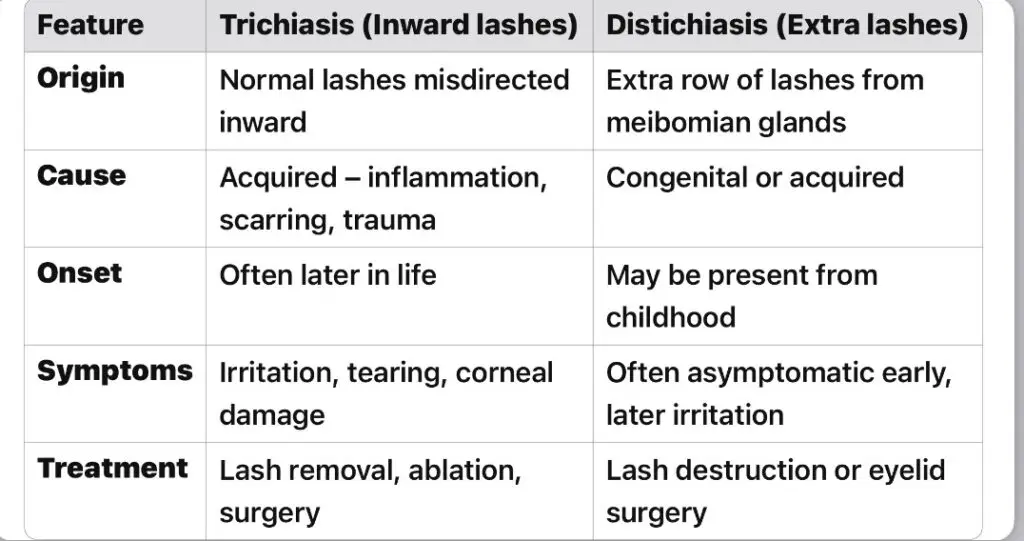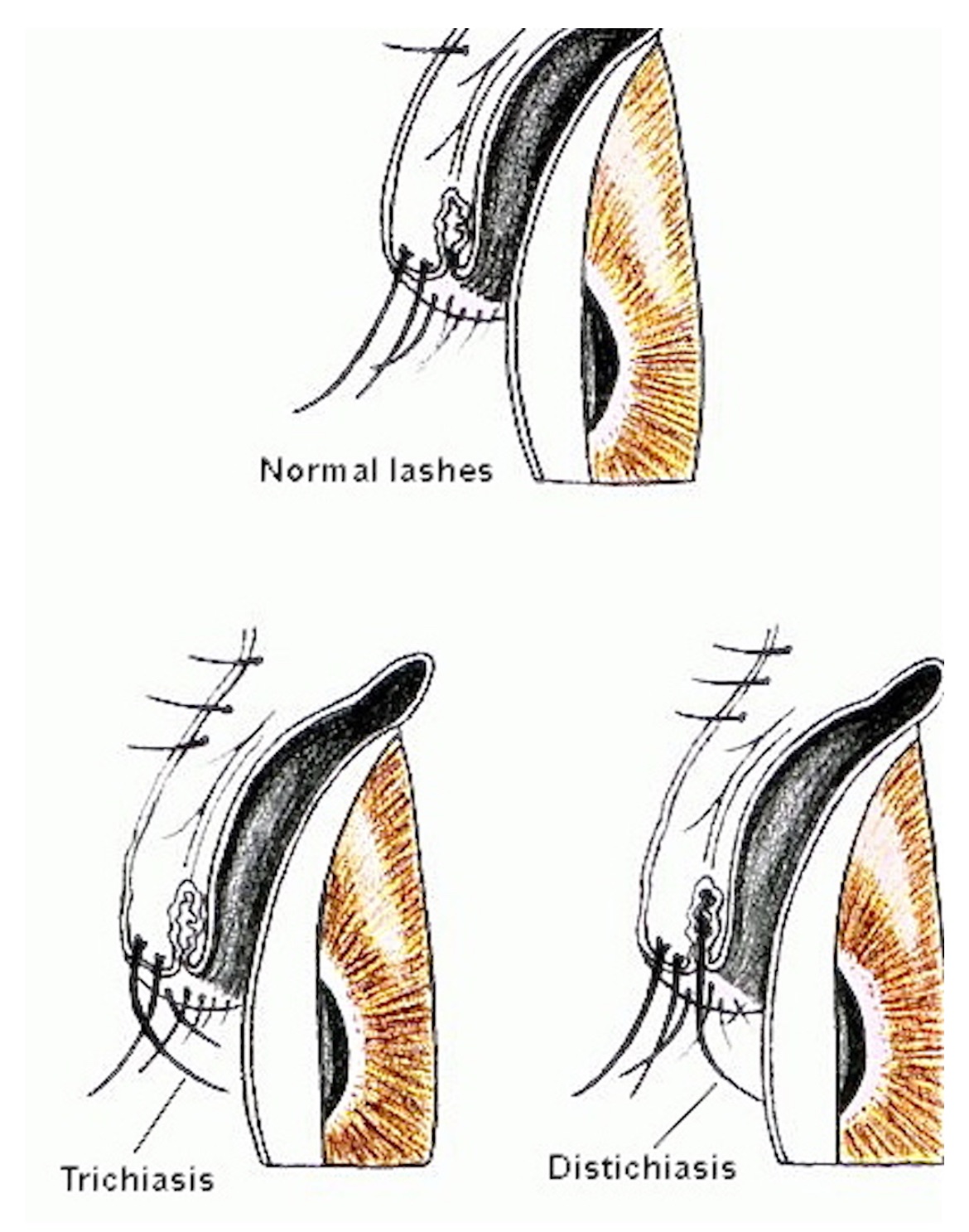Trichiasis and Distichiasis: Understanding the Differences
Our eyelashes are designed to protect the eyes by keeping dust and debris away. But when they grow abnormally or in the wrong direction, they can cause significant irritation and even damage to the cornea. Two such conditions are trichiasis and distichiasis. Although they may look similar to patients, their causes and management are quite different.

What is Trichiasis?
Trichiasis is a condition in which normally placed eyelashes grow inwards, toward the eyeball, instead of outward. This inward turning causes the lashes to rub against the cornea and conjunctiva, leading to irritation.
Causes of Trichiasis
Chronic eyelid inflammation: Commonly due to blepharitis or meibomian gland disease. Scarring conditions: Such as trachoma, chemical injuries, or autoimmune diseases affecting the eyelids. Aging changes: Involutional entropion (turning in of the eyelid margin) may redirect lash growth. Trauma or surgery: Previous eyelid injuries can alter lash orientation.
Symptoms
Foreign body sensation in the eye Redness and tearing Light sensitivity Eye pain or discomfort In advanced cases, corneal abrasions or ulcers, which may threaten vision
Treatment of Trichiasis
Temporary relief: Plucking misdirected lashes (epilation) or using lubricating drops.
Definitive treatment: Electrolysis or radiofrequency ablation to destroy the lash follicle.
Cryotherapy or laser ablation for resistant cases. Surgical correction if there is associated eyelid malposition.
What is Distichiasis?
Distichiasis refers to the presence of an extra row of eyelashes, which usually grow from the openings of the meibomian glands rather than from the normal lash line.
Causes of Distichiasis
Congenital (present from birth): A developmental anomaly where meibomian glands are replaced by lash follicles. Sometimes associated with genetic syndromes such as Lymphedema–Distichiasis Syndrome.
Acquired: Occurs later in life due to chronic inflammation, trauma, or scarring conditions like Stevens–Johnson syndrome and ocular cicatricial pemphigoid.
Symptoms
Some patients remain asymptomatic if the extra lashes are fine and soft. When lashes are thicker, they can cause: Redness and irritation Tearing Sensitivity to light Corneal abrasions or scarring
Treatment of Distichiasis
Mild cases: Epilation or use of lubricating drops. Definitive treatments: Electrolysis, cryotherapy, or laser ablation of abnormal follicles. Eyelid splitting surgery or excision of lash-bearing tissue in severe cases.
Key Differences Between Trichiasis and Distichiasis

Conclusion
Both trichiasis and distichiasis can lead to chronic eye irritation and potential corneal complications if left untreated. Trichiasis arises from misdirection of normal lashes, while distichiasis involves an abnormal extra row of lashes. Early diagnosis, regular monitoring, and timely treatment are essential to prevent long-term damage and preserve vision.
Discover more from An Eye Care Blog
Subscribe to get the latest posts sent to your email.


You must be logged in to post a comment.